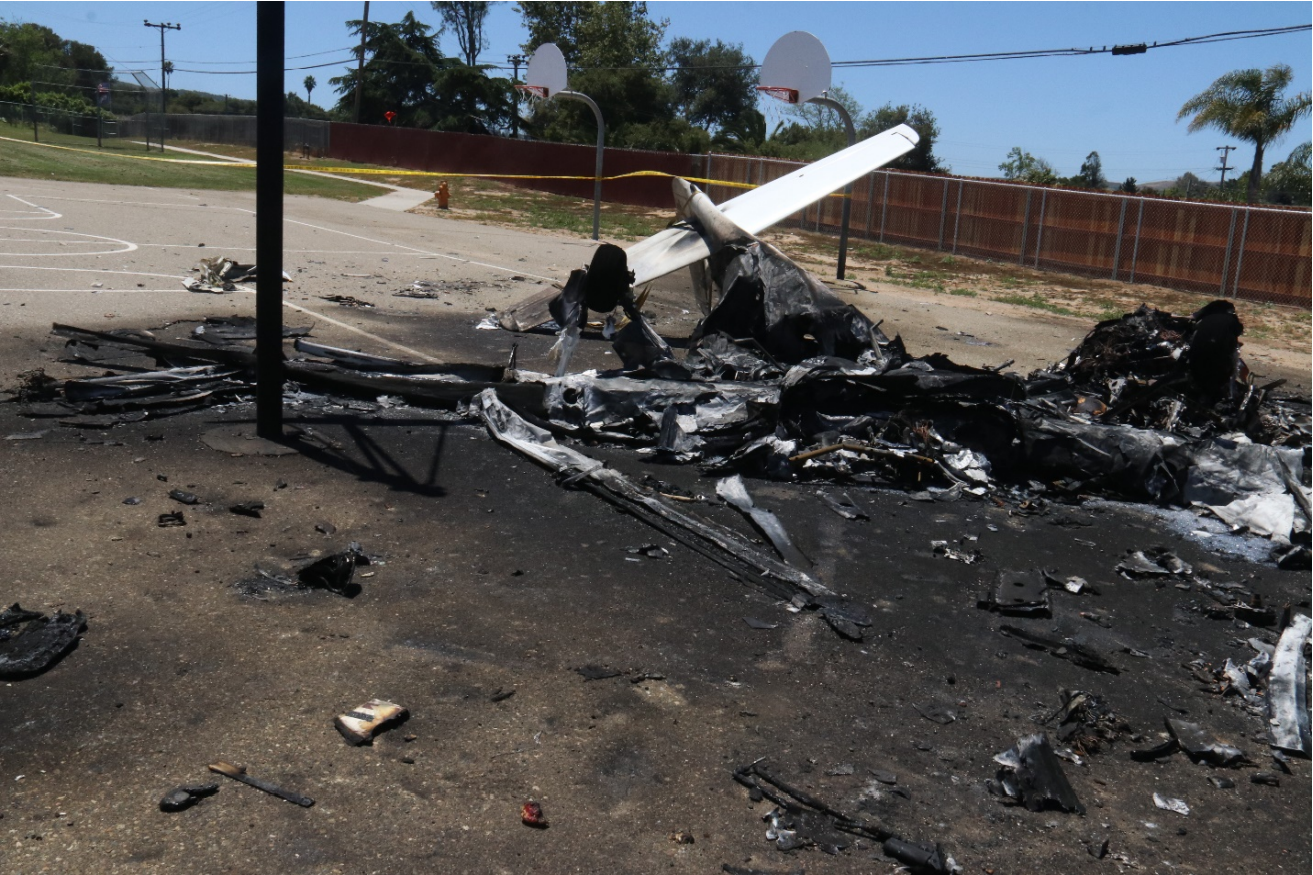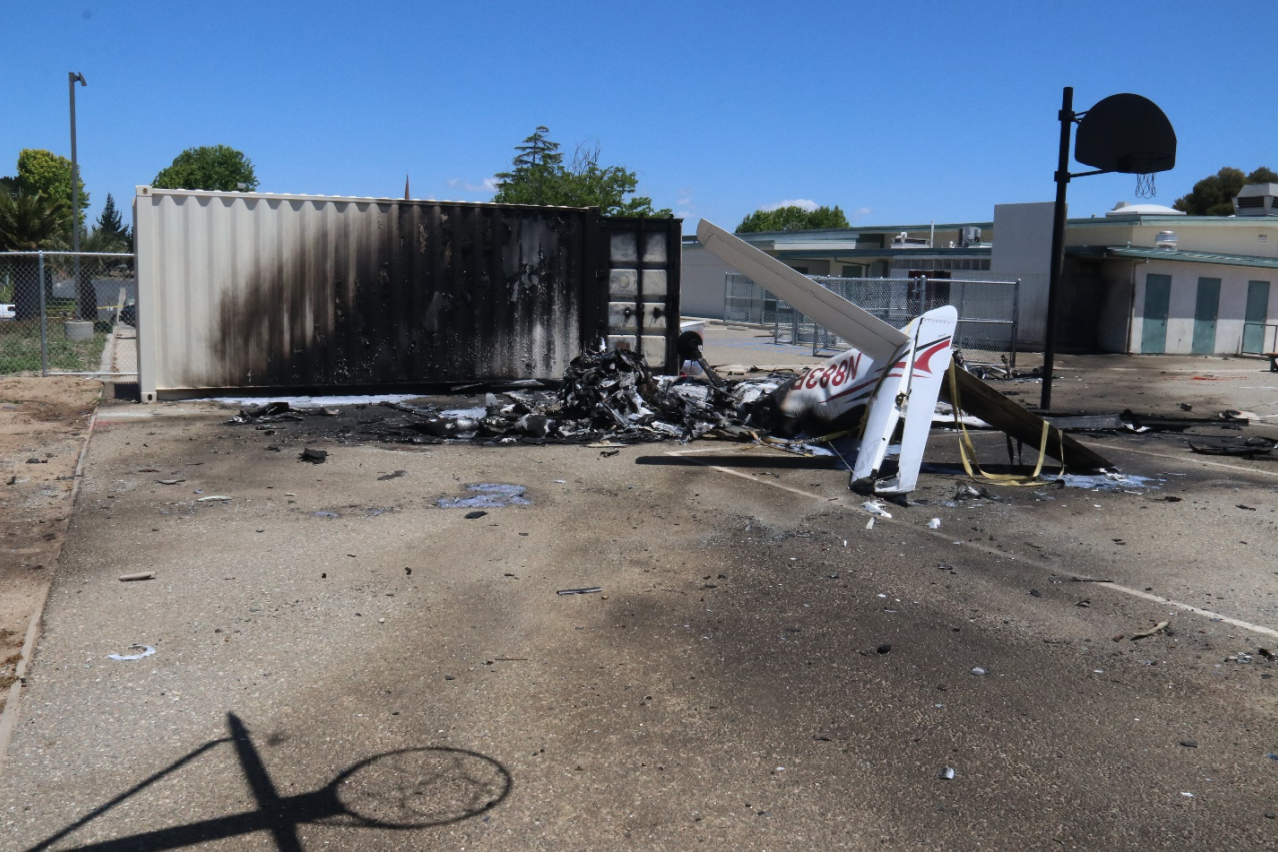
ASN Wikibase Occurrence # 236272
This information is added by users of ASN. Neither ASN nor the Flight Safety Foundation are responsible for the completeness or correctness of this information.
If you feel this information is incomplete or incorrect, you can submit corrected information.
| Date: | Wednesday 20 May 2020 |
| Time: | 10:42 |
| Type: |  Cirrus SR20 |
| Owner/operator: | West by Southwest Investments LLC |
| Registration: | N883PJ |
| MSN: | 1217 |
| Year of manufacture: | 2002 |
| Total airframe hrs: | 2863 hours |
| Engine model: | Continental IO-360 SERIES |
| Fatalities: | Fatalities: 1 / Occupants: 1 |
| Aircraft damage: | Destroyed |
| Category: | Accident |
| Location: | Santa Maria, CA -
 United States of America United States of America
|
| Phase: | Approach |
| Nature: | Training |
| Departure airport: | Los Angeles-Van Nuys Airport, CA (VNY/KVNY) |
| Santa Maria Airport, CA (KSMX) | |
| Investigating agency: | NTSB |
| Confidence Rating: |
The student pilot was making his second solo cross-country flight. Following an initial straight-in approach to runway 30, he executed a go-around and entered a left traffic pattern for another approach.
Flight track data revealed that when the airplane was about two-thirds of the way along an extended downwind leg, it leveled off temporarily about 1,700 ft mean sea level (about 1,440 ft above the ground). Shortly thereafter, the airplane started a left turn and gradual descent. The rate of descent increased as the airplane made a continuous, steepening left turn through the base leg. The airplane crossed the final leg in a steep left turn at a descent rate of about 2,000 ft per minute, made an abrupt right turn, and descended rapidly until the track ended in the vicinity of the accident site about 2 nautical miles short of the runway threshold. All communications with air traffic control were normal, and the pilot did not transmit any distress calls.
A witness observed the airplane flying lower than normal airplane traffic and appearing to wobble. Another witness observed the airplane with its wings perpendicular to the ground; the airplane straightened out, wobbled, and descended out of view. Several other witnesses reported hearing a loud noise, and two of them reported looking toward the direction of the sound and observing the airplane in a steep dive with a parachute trailing behind it.
Examination of the accident site revealed that the airplane impacted in a nose-low attitude and came to rest inverted; a postimpact fire ensued, destroying a large portion of the airplane. A postaccident airframe and engine examination did not reveal any anomalies that would have precluded normal operations.
The witness observations and the flight track data are consistent with the pilot losing control of the airplane during a steep descending turn from the base leg to the final leg of the traffic pattern, which resulted in exceedance of the airplane’s critical angle of attack and the airplane experiencing an aerodynamic stall.
The parachute rocket and deployment bag were found about 58 yards from the main wreckage. The parachute straps were extended from the airplane, and the parachute came to rest about 21 yards from the main wreckage. The positions of the rocket, bag, and parachute and the loud noise heard by the witnesses are consistent with the pilot deploying the parachute just before impact. Given the low altitude and high descent rate at the time of deployment, the parachute likely did not have time to inflate.
Postmortem toxicology testing of specimens from the pilot was positive for ethanol in the blood and brain at low concentrations and chlorpheniramine in the blood and liver at low concentrations. Given the low concentrations of ethanol and the lack of ethanol in the liver, it is likely the identified ethanol was from sources other than ingestion and did not contribute to the accident. In addition, given the low concentrations of chlorpheniramine, it is unlikely that the effects from the pilot’s use of chlorpheniramine contributed to the accident.
Probable Cause: The pilot’s exceedance of the airplane’s critical angle of attack during a steep and descending turn to final approach, which resulted in an aerodynamic stall and loss of control.
Accident investigation:
 |
|
Sources:
https://keyt.com/news/santa-maria-north-county/2020/05/20/pilot-killed-in-plane-crash-at-orcutt-school/
https://www.nbclosangeles.com/news/local/santa-maria-van-nuys-central-california-plane-crash-school-video/2365863/
NTSB
https://www.flightradar24.com/data/aircraft/n883pj#2488c8ab
https://flightaware.com/live/flight/N883PJ/history/20200520/1645Z/KVNY/L%2034.86916%20-120.41479
Location
Images:

Approach profile based on Flightaware ADS-B data



Photos: NTSB
Media:
SMFD responded to Orcutt for a aircraft down at Dunlap School. One confirmed fatality. Engine 4, BC5, and DC101 assisted SB County FD. SMFD units currently being released. pic.twitter.com/BFWTzEo9cd
— Santa Maria Fire (@SMFDHQ) May 20, 2020
Viewer video purportedly showing the plane crash in Orcutt this morning resulting in a large fireball. @KSBY (Credit: Albert Mendoza) pic.twitter.com/ohfXl2oG9U
— Dustin Klemann (@Djklemann) May 20, 2020
Revision history:
| Date/time | Contributor | Updates |
|---|---|---|
| 20-May-2020 19:00 | MusicalFreedom | Added |
| 20-May-2020 19:02 | harro | Updated [Cn, Operator, Other fatalities, Source, Embed code] |
| 20-May-2020 19:07 | harro | Updated [Embed code, Narrative] |
| 20-May-2020 19:13 | harro | Updated [Embed code, Photo] |
| 20-May-2020 20:31 | RobertMB | Updated [Operator, Nature, Source, Narrative] |
| 20-May-2020 20:41 | RobertMB | Updated [Narrative] |
| 21-May-2020 06:47 | Kristian | Updated [Narrative] |
| 08-Oct-2020 13:22 | RobertMB | Updated [Narrative] |
| 26-Jun-2021 18:57 | aaronwk | Updated [Time, Location, Nature, Source, Narrative, Category] |
| 24-Jun-2022 12:20 | Captain Adam | Updated [Source, Narrative, Accident report, Photo] |
| 24-Jun-2022 12:24 | Captain Adam | Updated [Photo] |
| 24-Jun-2022 12:24 | Captain Adam | Updated [Photo] |
Corrections or additions? ... Edit this accident description
The Aviation Safety Network is an exclusive service provided by:


 ©2024 Flight Safety Foundation
©2024 Flight Safety Foundation